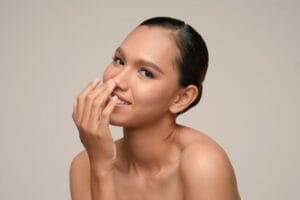Types of Rhinoplasty: Your Complete Guide to Nose Surgery Options
Sarah had been considering rhinoplasty for years. Her nose had always felt out of proportion with her face—too prominent, with a slight hump that caught the light in ways that made her self-conscious in photos. But when she started researching types of rhinoplasty, she was overwhelmed by the options. Open rhinoplasty, closed rhinoplasty, functional rhinoplasty, ethnic rhinoplasty, revision rhinoplasty—the terminology alone felt like learning a new language.
Here’s what she discovered, and what you should know: there isn’t one single type of rhinoplasty procedure. Instead, there are multiple approaches, techniques, and variations that surgeons use depending on what you’re trying to achieve. The various types of rhinoplasty available today reflect how personalized this procedure has become. The right choice depends on your anatomy, your goals, whether you’re addressing functional issues or purely cosmetic concerns, and how extensive the changes need to be.
Understanding the different types of rhinoplasty is crucial before you even schedule a consultation. This knowledge helps you ask better questions, set realistic expectations, and find a surgeon whose expertise aligns with your specific needs. Let’s break down the main categories and approaches you’ll encounter.
What are the different types of rhinoplasty?
The main types of rhinoplasty include open rhinoplasty (with external incisions for complex cases), closed rhinoplasty (all incisions inside nostrils), functional rhinoplasty (improves breathing), cosmetic rhinoplasty (enhances appearance), revision rhinoplasty (corrects previous surgery), ethnic rhinoplasty (preserves cultural features), and non-surgical rhinoplasty (uses fillers for temporary changes).
Open vs. Closed Rhinoplasty: Understanding These Key Types of Rhinoplasty
The first major decision in rhinoplasty involves how the surgeon accesses the nasal structures. This comes down to two primary approaches, each with distinct advantages. When comparing the types of rhinoplasty available, this distinction between open and closed techniques forms the foundation of most surgical plans.
Open Rhinoplasty: A Primary Type of Rhinoplasty with Maximum Visibility
Open rhinoplasty gets its name because the surgeon literally opens up the nose to see everything clearly. They make a small incision across the columella—that strip of tissue between your nostrils—plus additional incisions inside the nostrils. This creates what surgeons call a “columellar incision,” and it allows them to lift the skin off the underlying bone and cartilage framework.
Think of it like lifting the hood of a car: suddenly, everything that was hidden is visible. The surgeon can see exactly how the cartilage is shaped, where bones need repositioning, and how different structures relate to each other. This visibility is why open rhinoplasty is often the go-to choice for complex cases.
In my practice, I’ve observed that open rhinoplasty works particularly well when you need significant reshaping. If you’re dealing with a severe hump, a crooked nose that needs straightening, a drooping tip that requires extensive tip work, or revision surgery where the anatomy has been altered before, the enhanced visibility matters.
The trade-off? You’ll have a small scar on the columella, though most surgeons place it strategically so it becomes nearly invisible as it heals. There’s also typically more swelling initially compared to closed rhinoplasty, and recovery might take a bit longer—usually two to three weeks for the initial healing, though complete healing takes months.
Closed Rhinoplasty: Types of Rhinoplasty Procedures Without External Scars
Closed rhinoplasty takes the opposite approach. All incisions stay hidden inside your nostrils—no external cuts whatsoever. The surgeon works through these internal openings, using specialized instruments to reshape the bone and cartilage.
This technique appeals to people who want to avoid any visible scarring, period. It also tends to produce less initial swelling because there’s less tissue manipulation. Recovery can be a bit quicker, and many patients report feeling more comfortable during the healing process.
But here’s the catch: working through small internal incisions limits what the surgeon can see and do. It’s like trying to repair something through a keyhole—possible, but more challenging. Closed rhinoplasty works best for relatively straightforward cases. If you need minor tip refinement, small hump reduction, or subtle bridge work, it might be perfect. For anything more complex—significant asymmetry, major structural changes, or revision work—the limited visibility becomes a real constraint.
Some surgeons prefer closed rhinoplasty because they’ve mastered the technique and can achieve excellent results without external incisions. Others gravitate toward open rhinoplasty for its flexibility. The choice often depends on your surgeon’s training and your specific needs.
Functional Rhinoplasty: One of the Most Important Types of Rhinoplasty
While many people think of rhinoplasty as purely cosmetic, that’s not always the case. Among the various types of rhinoplasty, functional rhinoplasty addresses structural problems that interfere with breathing. Maybe you have a deviated septum that makes one nostril perpetually stuffy. Perhaps your nasal valves collapse when you inhale, creating resistance. Or trauma left your nasal passages narrowed or blocked.
The goal here isn’t just aesthetics—though functional rhinoplasty can improve appearance too—but restoring proper airflow. When done for medical necessity, insurance companies often cover at least part of the cost, which makes this different from purely cosmetic procedures.
The techniques used in functional rhinoplasty depend on the specific problem. Septoplasty straightens a deviated septum. Turbinate reduction addresses enlarged turbinates—those structures inside your nose that can swell and block airflow. Nasal valve surgery strengthens or reconstructs weakened valves. Sometimes cartilage grafts are necessary to support collapsing areas.
What makes functional rhinoplasty interesting is that surgeons often combine it with cosmetic improvements. If they’re already working on the internal structures, making aesthetic refinements adds relatively little extra time or risk. Many patients choose this approach, addressing both functional and cosmetic concerns in one procedure.
That said, if breathing issues are your only concern, a functional rhinoplasty focuses exclusively on that. The changes might be invisible from the outside, but the improvement in airflow can be life-changing for people who’ve struggled with chronic stuffiness or mouth breathing.
According to the American Academy of Otolaryngology-Head and Neck Surgery, functional rhinoplasty can significantly improve quality of life for patients with structural nasal issues.
Cosmetic Rhinoplasty: Types of Rhinoplasty for Aesthetic Improvement
When people talk about wanting a “nose job,” they’re usually referring to cosmetic rhinoplasty. This category encompasses procedures designed to improve nasal appearance, whether that means reducing size, reshaping contours, refining the tip, or correcting asymmetry. When exploring types of rhinoplasty for aesthetic improvement, cosmetic rhinoplasty offers the widest range of possibilities.
Cosmetic rhinoplasty is incredibly versatile. Some patients want their nose smaller overall. Others are happy with the size but want to remove a dorsal hump. Tip work is common—refining a bulbous tip, lifting a drooping one, or correcting asymmetry. Bridge work can narrow a wide nose or build up a flat bridge. Nostril reshaping addresses width or flare.
The techniques used depend entirely on your starting point and goals. Reduction rhinoplasty decreases overall nasal size, often involving bone and cartilage removal. Augmentation rhinoplasty does the opposite, adding structure using cartilage grafts—sometimes from your septum, sometimes from your ear, sometimes from a rib if more material is needed.
Tip plasty focuses specifically on the nasal tip, refining its shape without altering other nasal structures. This appeals to people who like their overall nose but want the tip refined—less bulbous, more defined, better projected, or more symmetrical.
What many patients find surprising is how nuanced cosmetic rhinoplasty can be. It’s not just about making a nose smaller or larger. It’s about proportions, contours, angles, and how the nose relates to the rest of your face. A skilled surgeon considers your facial balance, ethnicity, gender, and personal goals to create results that look natural and harmonious.
According to the American Society of Plastic Surgeons, rhinoplasty procedures remain among the most popular cosmetic surgeries, with techniques constantly evolving to achieve more natural results.
Revision Rhinoplasty: Complex Types of Rhinoplasty for Previous Procedures
Not every rhinoplasty goes perfectly the first time. Sometimes the results don’t match expectations. Other times, healing leads to unexpected changes—asymmetry develops, breathing issues arise, or the aesthetic outcome falls short of what was hoped for. That’s where revision rhinoplasty comes in. Of all the types of rhinoplasty, this one requires the most specialized expertise because surgeons are working with altered anatomy from previous procedures.
Also called secondary rhinoplasty, this procedure addresses problems from a previous nose surgery. It’s inherently more complex because the surgeon is working with altered anatomy. Scar tissue has formed, cartilage structures may have been removed or repositioned, and the normal landmarks surgeons use for reference might have changed.
The challenges of revision rhinoplasty mean it requires an experienced surgeon. They need to assess what happened during the first procedure, identify what needs correction, and develop a plan that works with—rather than against—the existing changes. Sometimes this involves rebuilding structures that were removed, grafting cartilage where it’s needed, or carefully removing scar tissue that’s causing problems.
Common reasons people seek revision rhinoplasty include dissatisfaction with nasal appearance, functional breathing problems that developed or weren’t resolved, visible asymmetry, or issues like a pinched tip or an overly narrow bridge. In some cases, patients just want refinement—the first procedure got them 80% of the way there, and they want that last 20%.
Timing matters too. Surgeons typically recommend waiting at least a year after the initial procedure before considering revision work. This gives tissues time to fully heal and settle, ensuring you’re addressing the final result rather than temporary swelling or changes.
Ethnic Rhinoplasty: Specialized Types of Rhinoplasty for Diverse Patients
Ethnic rhinoplasty represents a specialized approach that respects and enhances the unique nasal characteristics associated with different ethnic backgrounds. This isn’t about making noses look “less ethnic” or conforming to a single aesthetic standard. Instead, it’s about refinement while preserving the features that reflect cultural identity.
People from diverse backgrounds—African, Asian, Middle Eastern, Hispanic, and others—often have distinct nasal anatomy. A wider nasal base, different bridge height, unique tip characteristics, or specific cartilage structures. Traditional rhinoplasty techniques developed primarily for Caucasian noses don’t always work well for these anatomical variations.
Surgeons experienced in ethnic rhinoplasty understand these differences. They know, for example, that reducing a wide nasal base requires careful techniques to avoid visible scarring. They understand how to work with thicker skin that’s common in some ethnic groups, or how to build up a low bridge without creating an unnatural appearance.
The goal is enhancement, not erasure. A good ethnic rhinoplasty preserves your cultural identity while addressing specific concerns—refining a wide tip without making it too narrow, improving bridge definition without creating a “Westernized” look, or correcting functional issues while respecting natural anatomy.
This requires both technical skill and cultural sensitivity. Patients should seek surgeons who have experience with diverse nasal anatomy and who understand that the goal isn’t to erase ethnic features, but to refine them in ways that align with your personal aesthetic goals.
Non-Surgical Rhinoplasty: Alternative Types of Rhinoplasty Without Surgery
What if you want nasal improvements but aren’t ready for surgery? That’s where non-surgical rhinoplasty, sometimes called a “liquid nose job,” comes in. This procedure uses injectable fillers—typically FDA-approved hyaluronic acid fillers like Juvederm or Restylane—to reshape the nose. When considering types of rhinoplasty that avoid surgical incisions entirely, non-surgical options offer a temporary alternative for minor refinements.
The concept is straightforward: strategically placed filler can smooth out bumps, fill in depressions, lift a drooping tip, or enhance contours. It’s minimally invasive, requires no downtime, and results are immediate. You walk in with a small bump on your bridge, and walk out with a smoother contour.
But—and this is an important but—non-surgical rhinoplasty has significant limitations. It can’t reduce nose size, can’t narrow wide nostrils. It can’t fix structural problems or breathing issues. It’s essentially sculpting with filler, which means it can only add volume, never subtract it.
The results are also temporary. Most fillers last 6 to 18 months before gradually dissolving. If you like the results, you’ll need repeat treatments to maintain them. Over time, this can become more expensive than surgical rhinoplasty, though the upfront cost is lower.
There’s another consideration: filler injection in the nose carries a unique risk. The blood supply to this area is delicate, and improper injection technique can potentially cause serious complications, including tissue damage. This isn’t a procedure to take lightly or seek from unqualified providers.
Non-surgical rhinoplasty works best for people with minor concerns who want to “try out” changes before committing to surgery, or those who have very specific, small adjustments in mind. It’s not a replacement for surgical rhinoplasty, but it can be a useful option in the right circumstances.
Specialized Types of Rhinoplasty: Advanced Techniques and Approaches
Beyond the main categories, several specialized techniques address specific situations or utilize advanced technology. These additional types of rhinoplasty represent evolving approaches that can benefit certain patients.
Preservation Rhinoplasty: Conservative Types of Rhinoplasty
Preservation rhinoplasty takes a conservative approach, maintaining as much of your original nasal anatomy as possible. Instead of removing large amounts of bone or cartilage, the surgeon makes subtle modifications that preserve the underlying structure. This technique often produces more natural-looking results and can maintain better nasal function over time.
The philosophy here is less is more. Preserve what works, refine what doesn’t, and let your natural anatomy guide the changes. It’s particularly appealing to people who want improvement without dramatic transformation.
Ultrasonic Rhinoplasty: Advanced Types of Rhinoplasty Technology
Ultrasonic rhinoplasty uses specialized ultrasonic instruments to reshape nasal bones with precision. Traditional rhinoplasty might use manual tools or rasps to file down bone, but ultrasonic techniques can make precise cuts with minimal trauma to surrounding tissues.
Proponents argue this leads to less swelling, faster recovery, and more predictable bone reshaping. The technology allows for fine-tuning that can be harder to achieve with traditional methods. It’s still relatively new, so not all surgeons have adopted it, but it represents an interesting evolution in rhinoplasty techniques.
Research published in the Journal of Plastic and Reconstructive Surgery indicates that newer techniques like ultrasonic rhinoplasty show promise for improved precision and patient outcomes.
Adolescent Rhinoplasty
Teenage rhinoplasty requires special consideration. Nasal growth typically continues into the late teens, and performing surgery too early can interfere with natural development or lead to results that change as growth continues.
Most surgeons recommend waiting until nasal growth is complete—around age 16 for girls and 18 for boys—before considering rhinoplasty. There are exceptions for functional issues or severe deformities, but the general principle is to wait for maturity.
When adolescent rhinoplasty is appropriate, it can address both functional and cosmetic concerns. The key is careful timing and working with a surgeon experienced in pediatric and adolescent facial surgery.
Choosing the Right Type of Rhinoplasty for You
So how do you decide which type of rhinoplasty fits your situation? The answer starts with understanding your goals, but it doesn’t end there.
Begin by identifying what you want to change. Are you purely focused on appearance, or are there functional breathing issues? Is this a first procedure or a revision? Do you have specific concerns about preserving ethnic characteristics? These answers help narrow down the options.
Then, consider what you’re trying to achieve. Minor refinement might be possible with closed rhinoplasty or even non-surgical options. Major reshaping likely requires open rhinoplasty. Functional problems need functional rhinoplasty techniques. Revision work demands a surgeon skilled in secondary procedures.
But here’s what’s crucial: the surgeon you choose matters as much as the technique. An experienced surgeon who specializes in open rhinoplasty might achieve better results with that approach than a less experienced surgeon attempting closed rhinoplasty. Similarly, if you’re seeking ethnic rhinoplasty, you need someone who has extensive experience with diverse nasal anatomy. Understanding the types of rhinoplasty available helps you evaluate whether a surgeon’s expertise matches your specific needs.
During consultations, ask specific questions. How many of this particular type of procedure has the surgeon performed? Can they show before-and-after photos of similar cases? What’s their approach, and why do they recommend it for your situation?
Realistic expectations matter too. Rhinoplasty can produce remarkable improvements, but it’s not magic. Your anatomy, skin thickness, healing patterns, and other factors influence outcomes. A good surgeon helps you understand what’s achievable and what might be challenging.
Also consider timing. Recovery from rhinoplasty takes time—weeks for initial healing, months for swelling to fully resolve, and up to a year for the final result to settle. If you have important events coming up, plan accordingly.
What to Expect: The Process for Different Types of Rhinoplasty
Understanding the different types of rhinoplasty is important, but so is knowing what the overall process looks like. It typically starts with a thorough consultation where the surgeon examines your nose, discusses your goals, reviews your medical history, and explains recommended approaches.
Pre-surgical planning might include computer imaging to visualize potential results, though these are estimates, not guarantees. You’ll discuss anesthesia options—rhinoplasty can be done under general anesthesia or sometimes local anesthesia with sedation—and review the surgical plan in detail.
The surgery itself typically takes 2-3 hours, though complex cases can take longer. Afterward, you’ll have a splint on your nose and possibly packing inside your nostrils. Initial recovery involves some discomfort, swelling, and bruising, though this varies by individual and technique used.
The first week requires rest and careful attention to post-operative instructions. The splint usually comes off after 5-7 days, and you’ll see initial results, though swelling will obscure the final outcome. Over the following weeks and months, swelling gradually resolves, revealing more of the final shape.
Complete healing takes time—often 6-12 months or more for all swelling to resolve and tissues to settle into their final position. Patience during this process is essential, as is following your surgeon’s guidance about activity restrictions and care instructions.
Making Your Decision
Navigating the world of rhinoplasty types can feel overwhelming initially. Open or closed? Functional or cosmetic? Primary or revision? The terminology alone seems like a lot to process.
But here’s the good news: you don’t need to be an expert in surgical techniques. You do need to understand your goals clearly, find a qualified surgeon whose expertise matches your needs, and have realistic expectations about what’s achievable.
The different types of rhinoplasty exist because no single approach works for everyone. Your nasal anatomy, your concerns, your goals, and your surgeon’s expertise all factor into determining the right path forward. As you research the various types of rhinoplasty, you’ll discover that each has its place depending on individual circumstances. What matters most is working with someone who can assess your specific situation and recommend the approach that maximizes your chances of achieving the results you want.
Take time to research surgeons, ask questions during consultations, and don’t rush the decision. Rhinoplasty is a significant procedure, and the choice of technique—and surgeon—will shape your results for years to come. When done well, the right type of rhinoplasty can address both aesthetic and functional concerns while producing natural-looking results that enhance your overall facial harmony.













